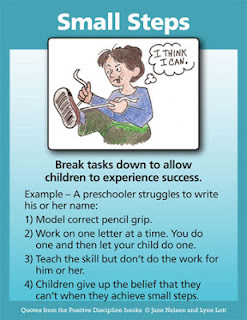Getting a new school year off to a good start can influence children’s
attitude, confidence, and performance both socially and academically.
The transition from August to September can be difficult for both children
and parents. Here are a few suggestions to help ease the transition and
promote a successful school experience from the NASP (National Association of School Psychologists).
Good physical and mental health. Be sure your child is in
good physical and mental health. Schedule doctor and dental checkups
early. Discuss any concerns you have over your child’s emotional
or psychological development with your pediatrician. Your doctor can
help determine if your concerns are normal, age-appropriate issues or
require further assessment. Your child will benefit if you can identify
and begin addressing a potential issue before school starts. Schools
appreciate the efforts of parents to remedy problems as soon as they
are recognized.
Review all of the information. Review the material sent by
the school as soon as it arrives. These packets include important information
about your child’s teacher, room number, school supply requirements,
sign ups for after-school sports and activities, school calendar dates,
bus transportation, health and emergency forms, and volunteer opportunities.
Mark your calendar. Make a note of important dates, especially
back-to-school nights. This is especially important if you have children
in more than one school and need to juggle obligations. Arrange for
a babysitter now, if necessary.
Make copies. Make copies of all your child’s health
and emergency information for reference. Health forms are typically
good for more than a year and can be used again for camps, extracurricular
activities, and the following school year.
Buy school supplies early. Try to get the supplies as early
as possible and fill the backpacks a week or two before school starts.
Older children can help do this, but make sure they use a checklist
that you can review. Some teachers require specific supplies, so save
receipts for items that you may need to return later.
Re-establish the bedtime and mealtime routines. Plan to re-establish
the bedtime and mealtime routines (especially breakfast) at least 1
week before school starts. Prepare your child for this change by talking
with your child about the benefits of school routines in terms of not
becoming over tired or overwhelmed by school work and activities. Include
pre-bedtime reading and household chores if these were suspended during
the summer.
Turn off the TV. Encourage your child to play quiet games,
do puzzles, flash cards, color, or read as early morning activities
instead of watching television. This will help ease your child into
the learning process and school routine. If possible, maintain this
practice throughout the school year. Television is distracting for many
children, and your child will arrive at school better prepared to learn
each morning if he or she has engaged in less passive activities.
Visit school with your child. If your child is young or in
a new school, visit the school with your child. Meeting the teacher,
locating their classroom, locker, lunchroom, etc., will help ease pre-school
anxieties and also allow your child to ask questions about the new environment.
Call ahead to make sure the teachers will be available to introduce
themselves to your child.
Minimize clothes shopping woes. Buy only the essentials.
Summer clothes are usually fine during the early fall, but be sure to
have at least one pair of sturdy shoes. Check with your school to confirm
dress code guidelines. Common concerns include extremely short skirts
and shorts, low rise pants, bare midriffs, spaghetti strap or halter
tops, exposed undergarments, and clothing that have antisocial messages.
\Designate and clear a place to do homework. Older children
should have the option of studying in their room or a quiet area of
the house. Younger children usually need an area set aside in the family
room or kitchen to facilitate adult monitoring, supervision, and encouragement.
Select a spot to keep backpacks and lunch boxes. Designate
a spot for your children to place their school belongings as well as
a place to put important notices and information sent home for you to
see. Explain that emptying their backpack each evening is part of their
responsibility, even for young children.
Freeze a few easy dinners. It will be much easier on you
if you have dinner prepared so that meal preparation will not add to
household tensions during the first week of school.

















